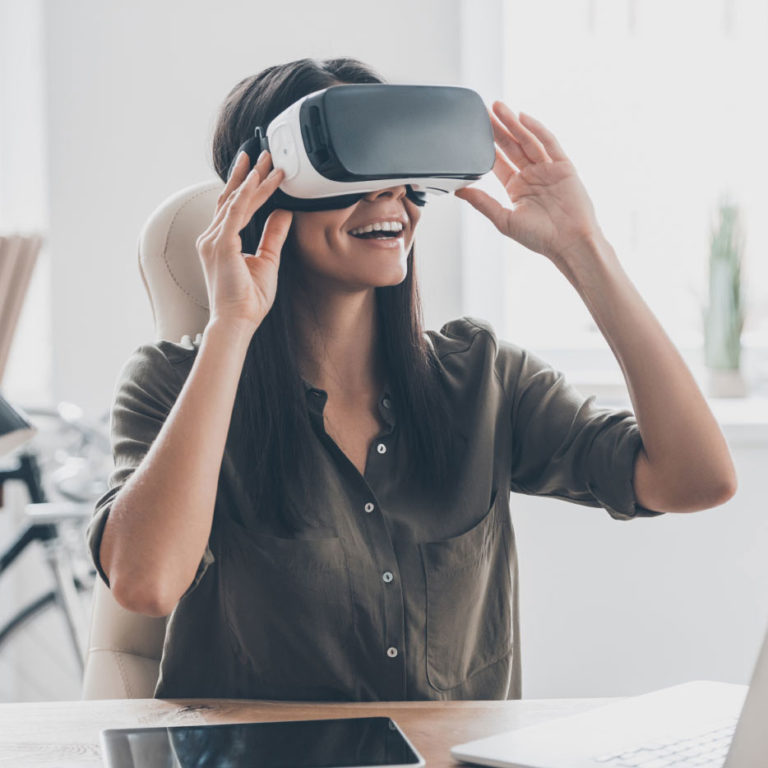Imagine this – you’re looking out toward the ocean, watching the waves hit the shoreline. A few crabs scuttle across your periphery and you notice a sand dollar. As you bend over to pick it up, your hand hits a hard wooden object and you remember you are in a virtual world, sitting in front of a living room table. Recent technological advancements have ushered in the age of virtual reality (VR). This new technology allows users to experience fully-immersive worlds and games from the comfort of their own homes. As fun and exciting as VR may be, there are certain aspects of our vision that should be taken into account before exploring far off planets or taking a trip to the Sahara.
Lenses are used in VR headsets in order to focus and reshape the image for each eye.
First, let’s get into the details of what VR actually is and how it works. VR works by tracking the movement of one’s head and replicating this movement in a computer-generated environment, seen on-screen. The computer image is either split up into two different feeds on the same screen or displayed on two smaller screens, which are offset relative to the left and right eyes to provide the illusion of depth. The screen is either embedded into a headset that you can wear, or can be a smaller screen, such as your phone screen, that is inserted into a pair of goggles that one holds up to look through. Lenses are used in VR headsets in order to focus and reshape the image for each eye.
Because VR is a relatively new technology, there are few long-term studies which convey any danger(s) in using VR headsets. Some minor side-effects do arise during short-term use which is why vision experts stress the importance of following the 20/20/20 rule in order to avoid eye strain. This rule advises to take a break viewing after 20 minutes and refocus your eyes on an object 20 feet away for 20 seconds to “stretch” your eyes, so to speak.
One of the other side-effects that can affect your VR experience is motion sickness and dizziness. While not directly affecting your vision, this is mainly caused by viewing graphics in motion. Your body can become slightly disoriented and you may start to feel nauseous as your brain interprets the fast-moving visuals as real movement. If you are not prone to motion sickness, you may opt to try VR experiences with little-to-no motion or possibly not at all.
Blue light is the highest energy wavelength of visible light
Blue light can also be a factor with VR. Blue light is emitted from electronics such as our phone screens, computer monitors and television screens. Blue light is the highest energy wavelength of visible light which is able to penetrate through the eyes’ natural filters. Increased exposure can cause permanent damage to the eyes over time as effects are cumulative and can lead to conditions such as macular degeneration. Remember to schedule an annual eye exam to take a preventative step in keeping your eyes healthy and ask your provider about special lenses and coatings that can help block out some of the damaging effects of blue light. You can learn more about blue light here.
VR is a prime example of what the cutting edge of technology has to offer. Although there are a few concerns with regard to vision safety, there are also some great applications for which it is being tested, such as our own Vision Simulator. Scientists are applying VR technology in order to help those with diminutive vision capabilities in order to help them see again. VR capabilities have only launched to the public in recent years leaving the door wide open for limitless possibilities in the future.
Sources:

